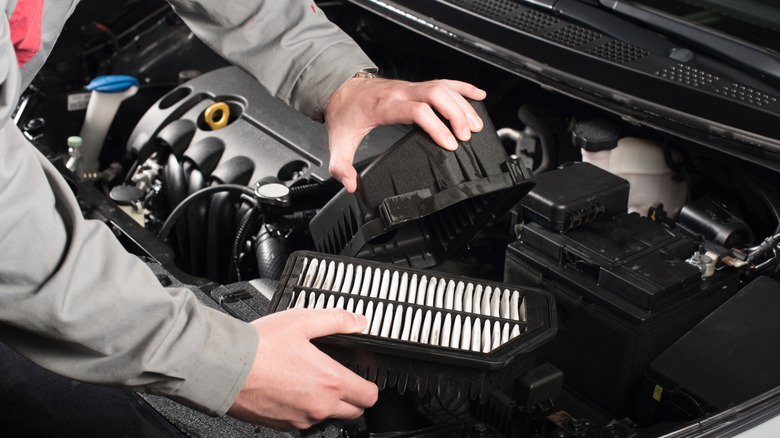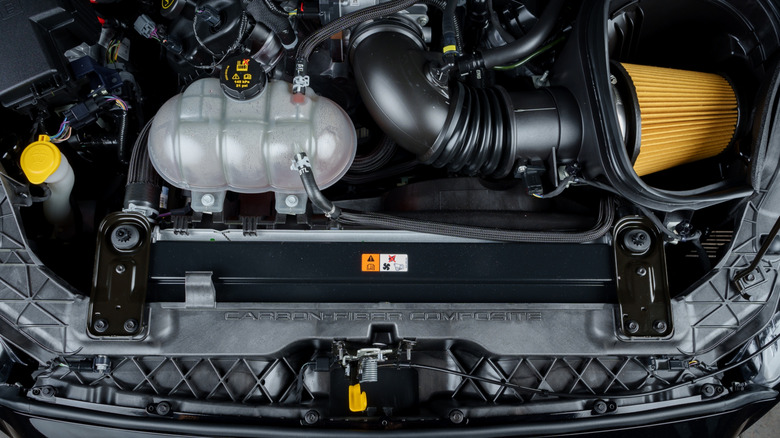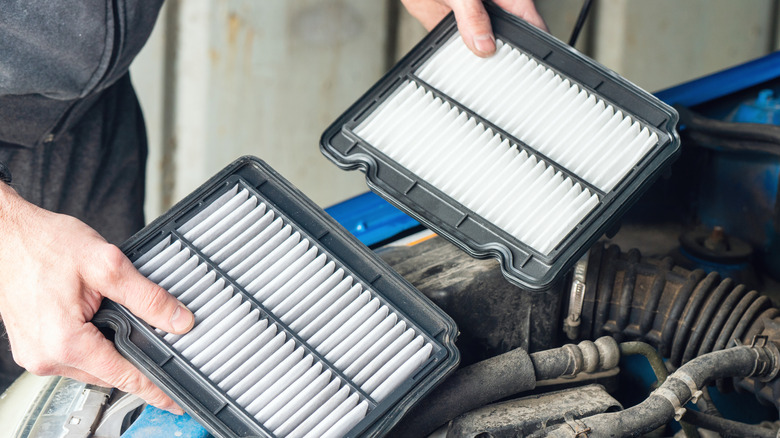How Are Performance Air Filters Different From Regular Ones?
One piece of car maintenance that often gets overlooked is changing the air filter. Owning a truly thankless job, this piece of equipment is responsible for keeping the air entering your car's engine clean as a whistle. Its design and physical appearance are not dissimilar to what's found in your home's air purifier or vacuum cleaner, only it's designed to operate under more extreme conditions.
Air filters are essential in keeping the engine internals clean, as gas and air mix in the cylinders, before glorious combustion turns the crankshaft. Coming pretty basic with most cars, unless you're purchasing a truly high-end sports car, stock air filters are not designed for maximum airflow. Again, they are simply there for the banal task of keeping bugs and dust from entering the deep, dark depths of an engine.
Cheap and expensive car engine air filters come in various configurations, prompting some car owners to question how much woven cotton and plastic should cost, while fussy and performance-minded owners may spring for the best options, no matter the price. To this end, high-flow air filters can be installed in a car's engine for a slight bump in performance as the throttle response improves with less airflow restriction. You'll get an increase in horsepower and torque with the right setup compared to stock, and it won't break the bank like installing a turbocharger. Here, we will cover how performance air filters differ from stock, to help you understand this niche component better.
Airflow and performance
OEM or stock air filters typically come in rectangular shapes with either cotton or paper substrates for the filter medium, usually showing in a pleated pattern. They are often disposable, sitting in enclosed or protected housing units, hidden to the side or sometimes lower portion of the engine bay, nondescriptly. They are meant to provide the maximum amount of protection for your car's engine, with some enthusiasts claiming to the detriment of performance as they starve the power potential by choking airflow.
Performance filters come in different configurations and materials, with some being made from special multi-layer foams that allow for improved air flow. Other aftermarket options are washable and reusable, meant to last for many years with proper care. Brands like K&N dominate the performance air filter market, offering filters that combine a cotton gauze media soaked with special oil to help capture dust.
Taking it a step further, a cold air intake is another way to get more horsepower out of your car, as a system that uses a cone-shaped open air filter. This is one that is fully exposed and not enclosed in a plastic box like typical, stock setups — positioned at the lowest portion of the engine bay where air is cooler. In turn, this cooler, denser air is said to increase performance even more, with some claiming a jump of, on average, five to 15 horsepower. Factors like the engine size, exhaust systems, intake tubing, and ambient air temperature and all factor into air-related performance.
Maintenance and considerations
For many enthusiasts, swapping out the stock air filter is the first step in a tuning project, where engine modifications begin to take effect, all in the name of a few horsepower here, a few pound-feet of torque there. It's an easy upgrade, and most car tuners agree that the added cost is worth it. In contrast, others may appreciate the environmental aspect of filters that last a lifetime (with proper maintenance).
A simple fact of owning a car is that you're going to have to change the air filter eventually, whether it's a stock one or an aftermarket kit. If you're unsure of your car's compatibility, you can reference a performance air filter website — like K&N's — to verify if they do indeed make a compatible filter for your car. However, it is best to consult a mechanic if you're unsure about the correct air filter specs.
For those who are comfortable with general car projects, changing your vehicle's air filter is a relatively easy task you can do at home, and should be done per the manufacturer's recommended service intervals. After installation, if you happen to have purchased a washable performance filter, you now know how to remove it for cleaning and reinstallation, which is yet another easy car maintenance task you can do in your own parking space. Whether or not a performance air filter is right for you is your choice, but for the sake of your engine, don't forget to change your filters.


